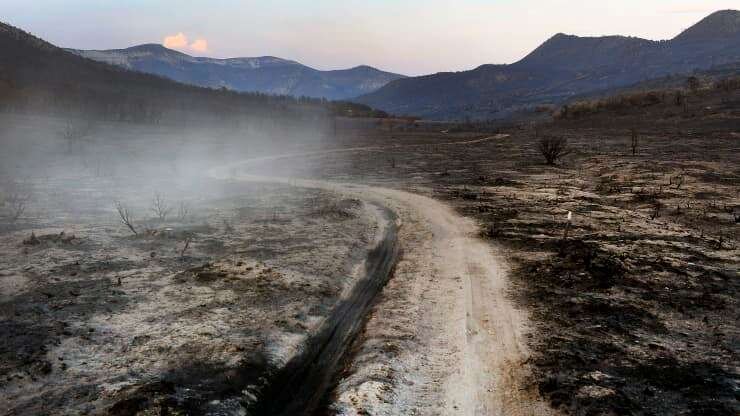Emma Newburger
Nearly half of the continental U.S. is in a moderate to exceptional drought, government forecasters said Thursday, and conditions are expected to grow more severe and persistent over the next three months.
It’s the most significant spring drought to grip the country since 2013 and will impact roughly 74 million people, according to the National Oceanic and Atmospheric Administration.
The drought stretches from the Pacific Coast to the Great Plains and upper Midwest. The worst hit area is the Southwest, which experienced a La Nina and a failed summer monsoon in 2020.
Land owned by the Dick and Meg Latham and his sister Julia was devastated by the Pine Gulch Fire on August 27, 2020 near De Beque, Colorado. The fire burned the land so quickly and badly that in many parts nothing is left but deep ash, soot and stumps of trees and brush that had been there before.
Helen H. Richardson | MediaNews Group | The Denver Post via Getty Images
Nearly half of the continental United States is in a moderate to exceptional drought, government forecasters said on Thursday, and conditions are expected to grow more severe and persistent over the next three months.
It’s the most significant spring drought to grip the country since 2013 and will affect about 74 million people, scientists with the National Oceanic and Atmospheric Administration said during a media briefing announcing their spring weather outlook.
The drought stretches from the Pacific Coast to the Great Plains and upper Midwest. The worst hit area is the Southwest, which experienced a La Nina event and a failed 2020 summer monsoon that exacerbated conditions.
“In many of the drought impacted areas, rangeland and winter pastures have already experienced adverse effects,” said Jon Gottschalck, a meteorologist at NOAA’s Climate Prediction Center, referring to a historic Arctic outbreak that brought dangerous cold and snowy conditions to the central and southern U.S. in February.
Hotter-than-average temperatures this spring and low soil moisture will fuel and expand drought conditions in the southern and central Great Plains and southern Florida, forecasters said. In the northern Plains, drought conditions could grow worse depending on how much rainfall the area experiences.
“This spring, we anticipate a reduced risk for flooding, and forecast significantly below average water supply where impacts due to low flow contribute to the continued drought,” Ed Clark, director of NOAA’s National Water Center in Tuscaloosa, Alabama, said in a statement on Thursday.
Climate change has worsened droughts and other extreme weather like hurricanes and heavy flooding across the country. Researchers also suggest that global warming has pushed the U.S. Southwest into a decades-long megadrought.
2020 tied with 2016 as the hottest year on record, which marked the end of the hottest decade as global temperatures increase due to greenhouse gas emissions trapping heat in the atmosphere.


